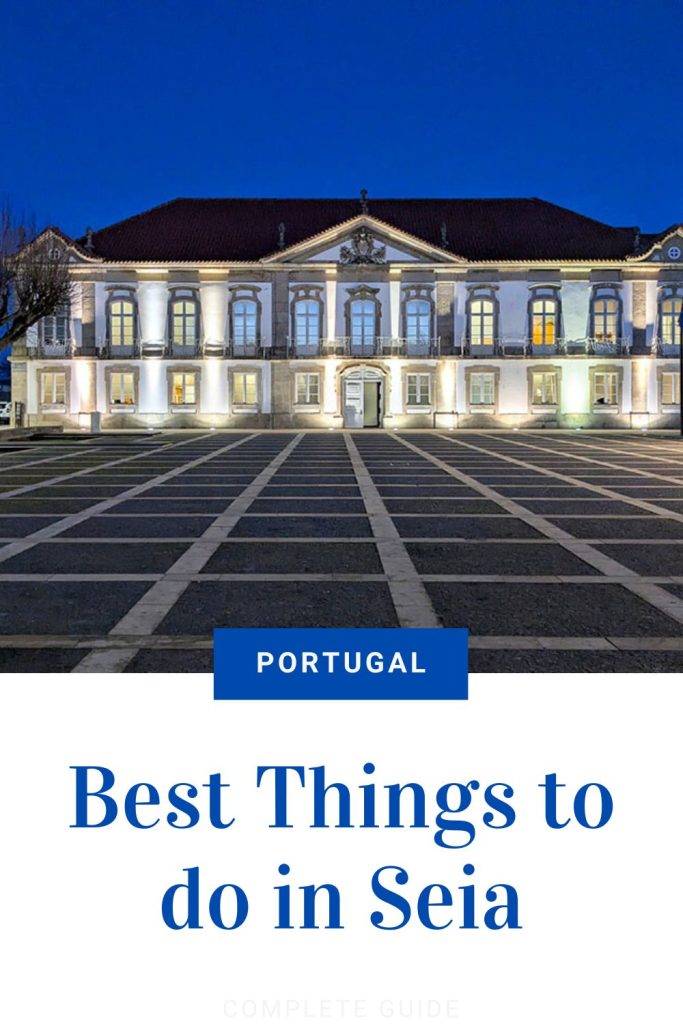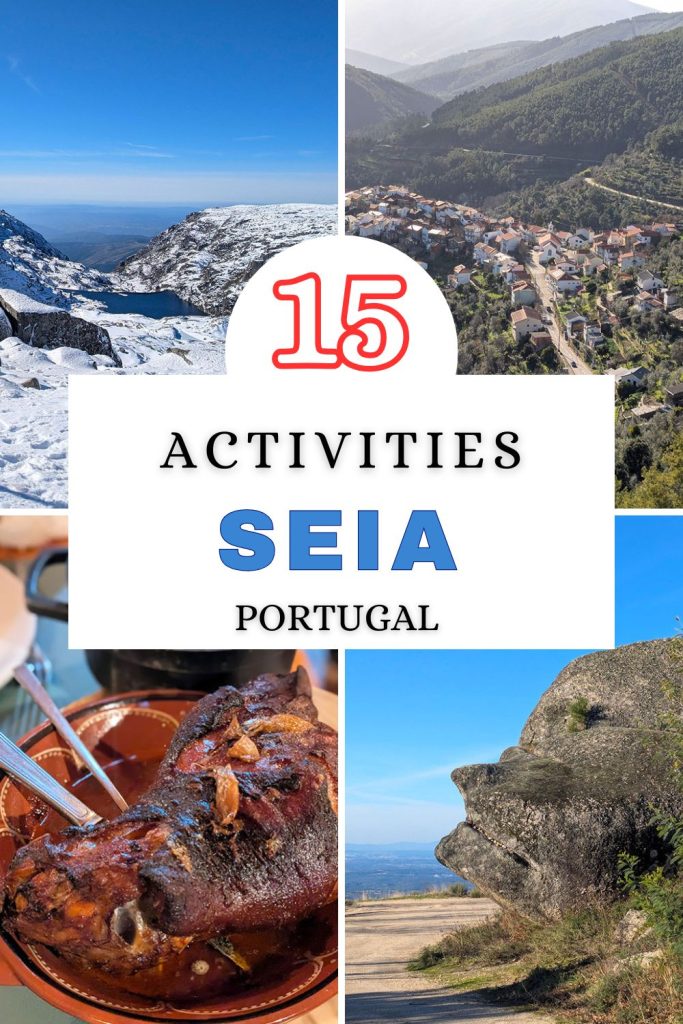Last Updated on 2025-04-16 by Jorge Bastos
Seia is one of the main gateways to Serra da Estrela, but it offers much more than just being a stopover.
Although not a large city, Seia surprises visitors with interesting attractions, especially its museums and historical landmarks.
Moreover, its natural surroundings invite you to explore stunning trails, picturesque villages, and a rich cultural heritage. Its location is perfect for discovering Serra da Estrela while also experiencing the traditions and peaceful atmosphere that define the region.
Get ready to explore Seia’s natural and cultural highlights and experience the genuine hospitality of its locals.
In this guide, we’ll show you where to stay, where to eat, and, of course, the main attractions in the city and the surrounding area so that you can make the most of your visit to Seia.
Things to Do in Seia
Seia’s Historic Center
As we mentioned, Seia’s historic center isn’t among the most remarkable in Portugal, but it still has enough attractions to make it worth a visit. In addition to several restaurants and shops selling typical products from Seia and Serra da Estrela, some historical landmarks deserve a visit, including:
- Casa das Obras – now home to the city hall.
- Chapel of São Pedro – an old chapel with Romanesque features.
- Church of Nossa Senhora da Anunciação – Seia’s main church, built on the site of the former castle.
- Seia Municipal Market – one of the best places to discover local products and traditional flavors from Serra da Estrela.
Additionally, the city is home to the Bread Museum, the Toy Museum, and the Serra da Estrela Interpretation Center—we’ll cover each in more detail.
While strolling through Seia’s center, take the opportunity to visit Queijaria de Seia D. Maria, where you can taste and buy traditional cheeses and cured meats from the region.

Bread Museum
The Bread Museum is probably the most well-known museum in Seia. Located slightly outside the city center, this modern museum takes visitors through time, showcasing how bread was traditionally made and its significance in communities’ daily lives.
Opened in 2001, it quickly became one of the city’s most iconic attractions. It displays ancient tools and machinery used over the centuries and a vast collection of objects related to bread production—from grain milling to baking in the oven.
Beyond its exhibits, the museum is also a great place to explore Portuguese cuisine. Its restaurant is renowned for its excellent food and service. To complete the experience, there’s a bakery where you can buy freshly baked bread.

Serra da Estrela Interpretation Center
The Serra da Estrela Interpretation Center was one of the biggest surprises of our last visit to Seia and the Serra. Honestly, we didn’t have high expectations. Still, the friendliness, knowledge, and enthusiasm of the people we met convinced us that this is a must-visit spot for anyone wanting to learn more about the region.
Admission to the Interpretation Center is free, but we highly recommend the guided tour to make the most of the experience. When we visited, the tour cost just €4 per person.
The guided tour includes a short video, but the most interesting part is the explanations about the geography of the Serra—covering the rivers, glacial valleys, lagoons, and more. It also delves into the Natural Park’s fauna, flora, and geology.
We spent over two hours there, which was an incredibly engaging experience. We learned a lot about Serra da Estrela and even got some great recommendations on places to visit—some of which we’ll share here.
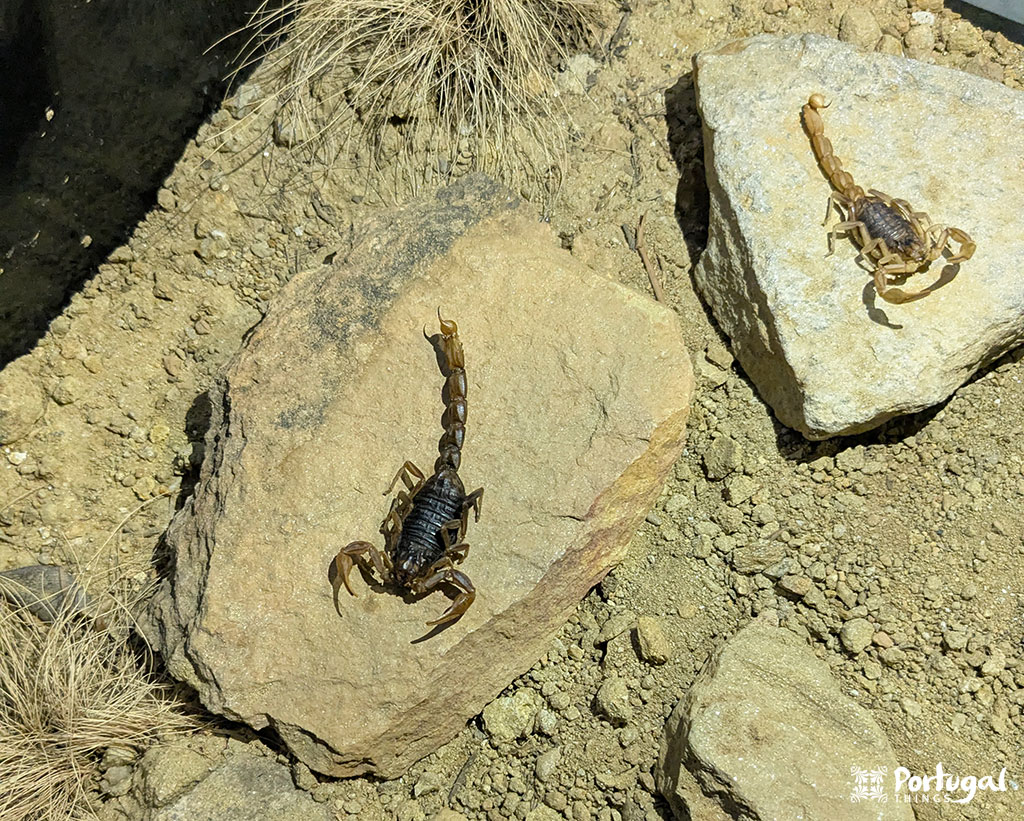
Electricity Museum
We loved the Electricity Museum! We didn’t have high expectations, but the guided tour pleasantly surprised us by engagingly explaining the hydroelectric harnessing of water from the Serra da Estrela.
The museum is located in the old Desterro hydroelectric plant—the oldest in the country and the only one in the Serra that is no longer operational. Here, you can see how electricity was generated—and still is (in other plants)—using the power of water.
In addition, there is a wealth of information about the Serra da Estrela, including an impressive video about the construction of the Lagoa Comprida dam.
Very close to the museum, you’ll also find Cabeça da Velha (which we discuss further below), the restaurant A Margarida I—one of our favorites for tasting authentic mountain cuisine—and a small riverside beach. With so many attractions nearby, spending an entire day in the area is easy.

Toy Museum
The Toy Museum of Seia is a fun and nostalgic space in the city center. It features an impressive collection of antique toys, ranging from the classic to rare examples.
This is a must-visit spot for anyone curious about the history of toys and play over time. It showcases toys from various eras and parts of the world, covering multiple types—from plastic dolls to miniatures and board games.
Visiting with children offers an excellent opportunity to show how past toys differed from today’s and explore some of the interactive exhibits. It’s a unique experience in Seia, revealing an unexpected side of Serra da Estrela.
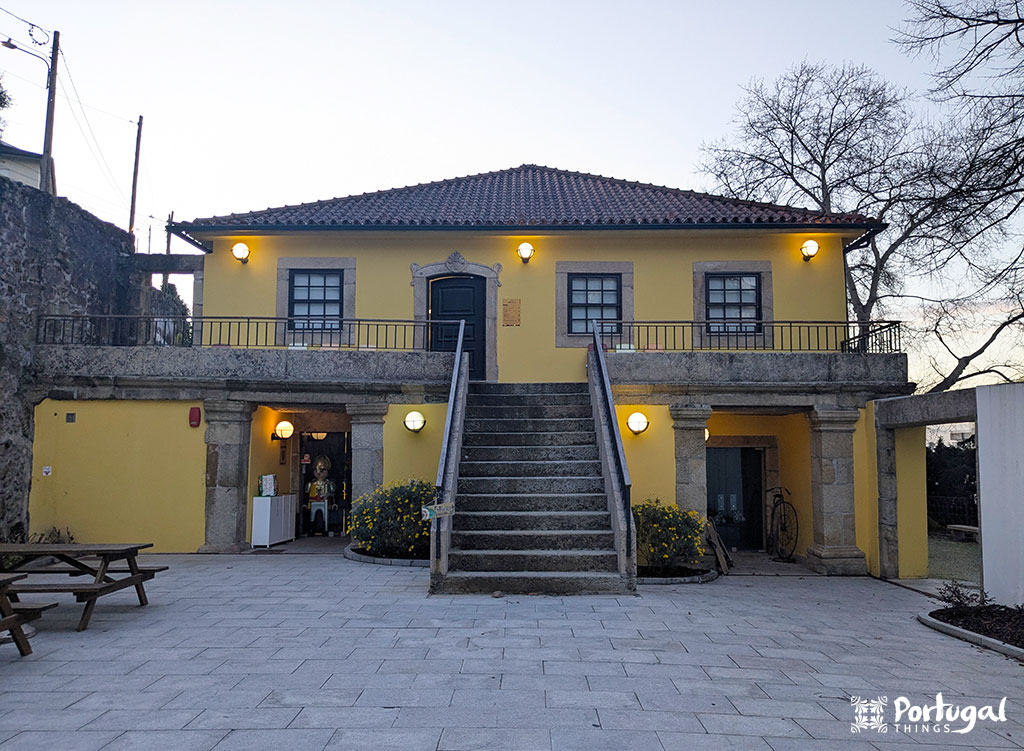
Lagoa Comprida
Lagoa Comprida is the largest lagoon in Serra da Estrela and one of the most iconic spots in Seia and the Natural Park. Situated at 1600 meters of altitude, along the road leading to Torre, this is a natural lagoon. However, it was significantly enlarged with the construction of the impressive dam visible from the road.
The construction of the dam took nearly half a century. The challenges posed by natural and climatic conditions and limited resources make this project an impressive feat. Currently, the dam is 1200 meters long and 28 meters high.
The lagoon and dam are often covered in snow in winter, creating spectacular scenes. In summer, the mild temperatures invite leisurely walks and relaxation. The surrounding area is ideal for short hikes—or even a bit longer, such as a trip to Covão dos Conchos, as you can see below.
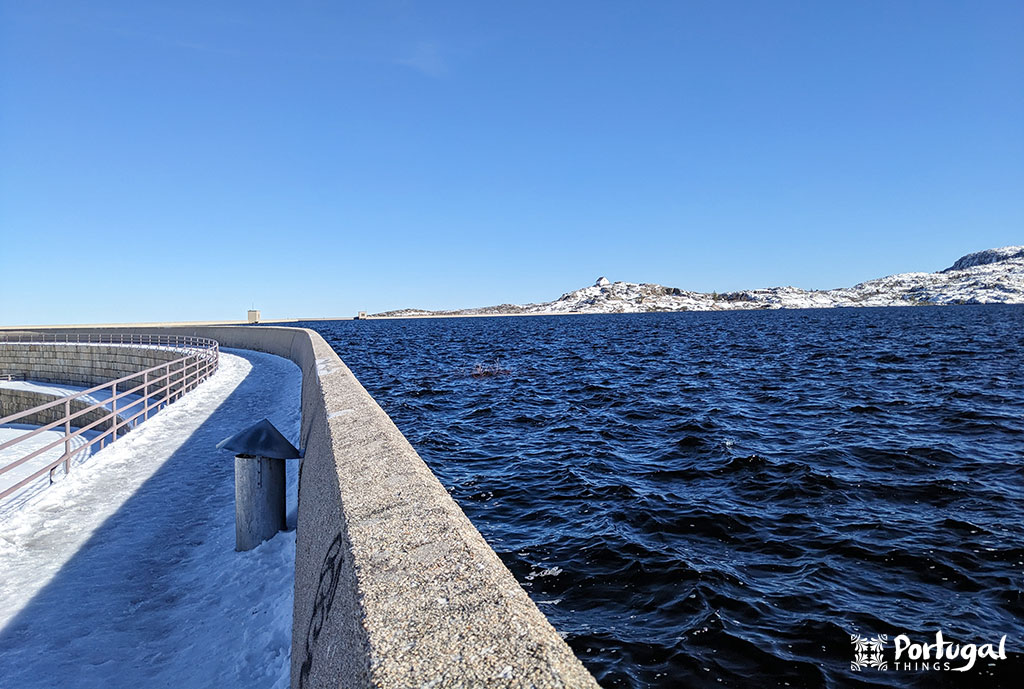
Covão dos Conchos
Covão dos Conchos is very close to Lagoa Comprida, yet it couldn’t be more different. The lagoon is relatively small, and access is only by foot via a trail about 4 km long.
This site became famous for its bell-shaped spillway, which has become a tourist attraction thanks to its unique and mysterious appearance. The spillway was built in 1955 to divert water from Ribeira das Naves to Lagoa Comprida through a 1,519-meter-long underground tunnel.
Top Tip
The originality of the spillway and the surrounding landscape have made Covão dos Conchos a popular destination for photographers and nature enthusiasts. However, if you plan to visit, avoid getting too close to the spillway, as the area can be dangerous.
Thus, the water collection at Covão dos Conchos is part of the incredible network of channels, lagoons, and aqueducts in Serra da Estrela that enable hydroelectric production—which you can learn more about at the Electricity Museum. It is one of the best places to see firsthand how it works and appreciate its scale.
Rota da Caniça
The Rota da Caniça (PR10 Seia) is a circular trail of approximately 7 km that starts in the beautiful village of Lapa dos Dinheiros. This well-marked walking route, although moderately challenging and not accessible to everyone, is an excellent way to explore some of Seia’s attractions.
Along the 7 km, you can discover the Lapa dos Dinheiros riverside beach, the Caniça Waterfall, the Devil’s Horns, the Sumo Hole, and the village of Lapa dos Dinheiros itself. Check out all the information about this hiking route, which has quickly become one of our favorites in Portugal.
If you cannot complete the entire trail, it’s not difficult to visit the Waterfall and Riverside Beach.

Cabeça
Cabeça is a picturesque mountain village in the municipality of Seia. It is also one of the most beautiful and unique, preserving traditional schist architecture and offering a breathtaking view of Serra da Estrela.
This village provides an authentic mountain experience. It has narrow streets, stone houses, and a peaceful atmosphere that invites relaxation and contemplation. It combines hospitality with tradition.
During Christmas, this small village of about 200 inhabitants transforms into a Christmas Village and attracts thousands of visitors. The streets and houses are decorated with natural and recyclable materials, such as gorse, vines, and fern leaves, all crafted by the residents.

Sabugueiro
Situated at about 1050 meters above sea level, Sabugueiro is one of the highest villages in Portugal and one of the best-known villages in the Serra da Estrela Natural Park.
Top Tip
Sabugueiro is often called the “highest village in the Serra da Estrela Natural Park” or even “the highest village in Portugal,” but this is not true.
Its strategic location makes it one of the best places to stay in Serra da Estrela, as we were close to Lagoa Comprida, the Ski Station, Torre, etc. In addition, the village features typical mountain architecture, with stone houses and schist roofs, offering a sense of seclusion and authenticity.
With about 400 inhabitants, Sabugueiro is strongly connected to local tradition and culture through its festivals, customs, and typical products—such as Serra cheese—which are an essential part of the regional experience. In Sabugueiro, you’ll also find one of our favorite restaurants in Serra da Estrela: Mirante da Estrela.

Torre
At an altitude of 1993 meters, Torre is the highest point in Continental Portugal. Despite this, access is very easy, making it one of the most popular tourist spots in Serra da Estrela. Interestingly, Torre is shared by three municipalities: Seia, Manteigas, and Covilhã.
Due to its elevation, Torre is usually covered in snow during the winter—especially between January and April. However, this largely depends on when the heaviest snowfalls occur and how long the cold persists. We’ve even seen snow on Torre in May.
At Torre, you’ll also find two radars that have become legendary and are an integral part of the landscape. Additionally, there are two or three small cafes and a shopping center selling typical regional products. In our experience, although the area is very touristy, the cheeses and cured meats are good and reasonably priced.
For the Portuguese, visiting Torre is almost a must whenever they head to Serra—whether for the snow, the incredible landscapes (both at the summit and along the way), or to pick up some cheese.

Ski Center
Portugal doesn’t have a significant history in winter sports, but you’ll find the Serra da Estrela Ski Center very close to Torre—over 1,900 meters above sea level. If you want to try skiing or snowboarding in Portugal, this is the only place.
Although officially part of the parish of Loriga, Seia, the ski center is slightly closer (20 km) to Covilhã and much nearer to Penhas da Saúde. Therefore, if you plan to ski, it’s ideal to stay near Penhas da Saúde (just 10 km away, reachable in about 15 minutes).
This is a relatively small ski resort compared to others in Europe. Still, it offers approximately 6 km of slopes (which may not all be open) spread across various difficulty levels, from beginner to advanced. Skiing and snowboarding lessons and renting equipment at relatively affordable prices are also possible.
You can check out the resort’s slope map for more information about the slopes and available services.

Cabeça da Velha
Cabeça da Velha is one of the most well-known granite rock formations in Serra da Estrela. Located near Nossa Senhora do Desterro, about 7 km (4.3 miles) from Seia, it resembles the profile of an old, toothless woman.
This rock formation is about 500 meters (0.3 miles) from the main road, and we recommend walking there. Although the path is a dirt road, it has a steep incline and is not in the best condition. Plus, a short walk is always a good idea!
The unique shape of this natural phenomenon and the surrounding landscape attract many visitors to the region. Nearby, you’ll also find the Seia Electricity Museum, a river beach, and the restaurant A Margarida I, so there’s plenty to do in the area.
Please don’t confuse it with Cabeça do Velho, next to the N232 road between Gouveia and Manteigas. This rock formation resembles the profile of an old man’s face, sculpted by erosion over thousands of years. It’s also worth visiting, but it is located in Gouveia.

Loriga River Beach
Loriga River Beach is one of the most famous in Serra da Estrela and Portugal. Located in the glacial valley of Loriga, it stands out for its pure and crystal-clear waters (usually very cold), sourced from mountain springs.
In the summer, it is one of Serra da Estrela’s must-visit spots. However, remember that it is also one of the most popular. Be prepared to share it with many other visitors, especially on weekends.
The beach has a café, a lifeguard, and restroom facilities during the swimming season.

Poço da Broca da Barriosa
Poço da Broca is one of the most famous waterfalls in Serra da Estrela. Formed by the Alvoco stream, it stands out for its natural beauty, scenic surroundings, and stunning pool beneath it. It is also one of the excellent river beaches in the region.
This waterfall is unique since it was created by an artificial diversion of the stream’s course for agricultural purposes. This diversion resulted in a waterfall followed by a deep pool. Besides Poço da Broca da Barriosa, there are several other nearby pools and waterfalls with a similar origin, such as Poço da Broca do Muro, Poço da Broca de Frádigas, and Poço da Broca de Aguincho.
We love this area so much that we included Poço da Broca in our list of the most beautiful waterfalls in Portugal.

When to Visit Seia?
As we’ve mentioned above about Torre, the ski center, and all the snow attractions, Seia is one of Portugal’s most typical winter destinations. The municipality has the country’s best snow attractions, making it naturally one of the best times to visit.
However, it’s also an excellent summer destination, with various popular river beaches, waterfalls, and several enjoyable hikes, such as the Rota da Caniça and the trail to Covão dos Conchos.
Therefore, Seia is a year-round destination and a place to visit multiple times, taking advantage of the diversity of attractions throughout the municipality.

Restaurant Recommendations in Seia
One of the advantages of visiting Seia is the wide variety of traditional restaurants in the area, serving local mountain dishes and other options from Portuguese cuisine. Some of our favorites include:
- A Margarida I – Located in Nossa Senhora do Desterro, this restaurant offers excellent cuisine. Some of the most popular dishes are black pork secreto with alheira migas on cornbread, and Bacalhau à Margarida, among others.
- Mirante da Estrela – Situated in Sabugueiro, this is an excellent option for those heading to or returning from Torre. It has a delightful dining room, and the kitchen is known for dishes like Bacalhau, Arroz de Carqueija, and Wild Boar.
- Borges – Probably the most well-known restaurant in Seia city, it is especially famous for its divine Joelho de Porco with rice and beans, but it also offers other quality dishes.
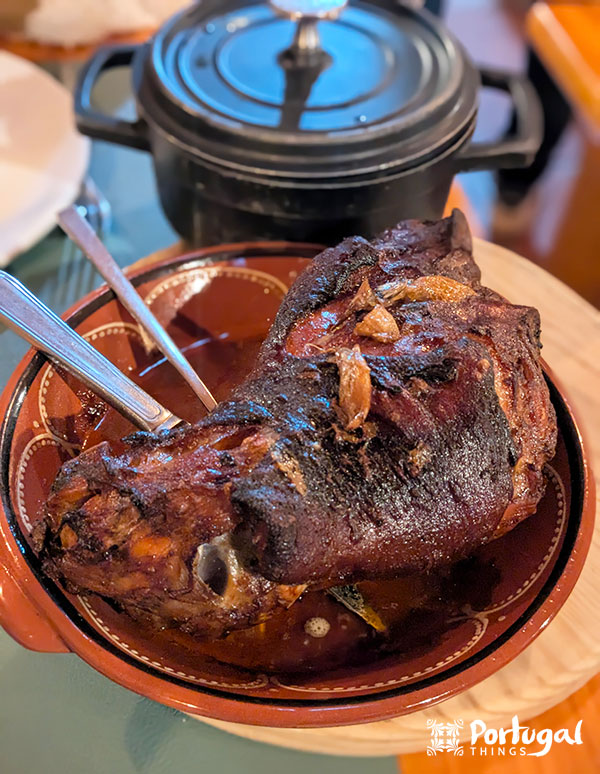
Where to Stay in Seia?
As a region heavily focused on tourism, Seia offers many great accommodation options. The diversity in types of lodging and prices is considerable, providing multiple choices, such as:
- Hotel Eurosol Seia Camelo—Located in the center of Seia, this is one of the best options for those who want to stay in the city and explore during the day. It’s a comfortable hotel with spacious rooms and classic furniture, all at very reasonable prices. More information here.
- Lobos Village is an excellent accommodation choice. It offers a delicious breakfast, a garden, and an outdoor pool. It is very close to Seia yet slightly outside the city center. See photos and book here.
- Abrigo de Montanha Hotel Rural—Situated in Sabugueiro, this hotel is a great choice for those who want to enjoy the snow. It has an indoor pool where you can relax after a “hard” day of exploring the Serra. See photos and prices here.
Pin it for later!
